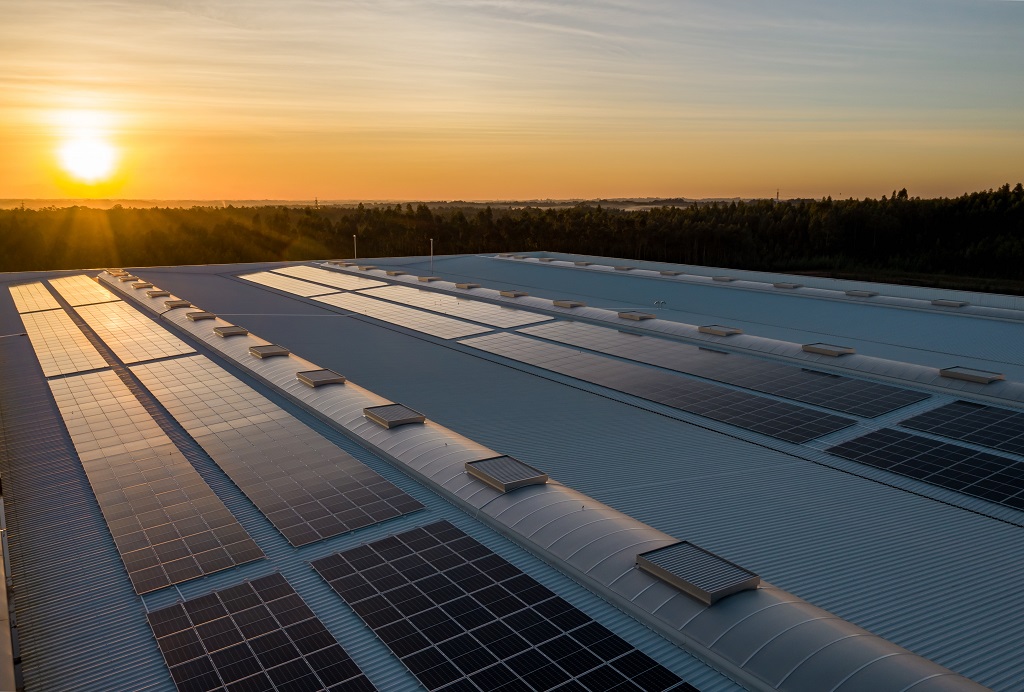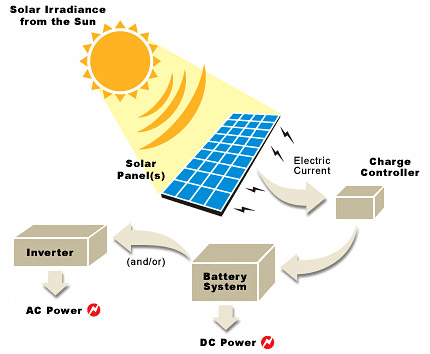Solar energy is becoming increasingly popular due to its numerous benefits. As a renewable energy source, it is sustainable and eco-friendly. It doesn’t produce harmful greenhouse gases, nor does it require any fuel or water to operate, which makes it both cost-effective and efficient. The process of converting solar energy into electricity is simple and easy to understand. In this article, we will delve deeper into the details of this process, starting from how solar panels work and how they capture the sun’s energy to the conversion of DC electricity to AC electricity, which is what we use in our daily lives. So, whether you’re a student, a homeowner, or a business owner, this article will provide you with the essential knowledge you need to understand how solar energy can be harnessed and converted into electricity to power your everyday life.
How solar panels work and how they capture the sun’s energy

Solar panels are made up of photovoltaic (PV) cells, which are made of silicon, a semiconductor material. When sunlight hits the PV cell, it excites the electrons within the cell, causing them to move around and create a flow of electricity. This flow of electricity is known as direct current (DC) electricity, which is then collected by the solar panel and sent to an inverter, where it is converted into alternating current (AC) electricity.
The process of capturing the sun’s energy starts with the solar panel’s design. The panel is made up of several layers, each with a specific purpose. The top layer is a protective layer made of tempered glass that shields the PV cells from damage and weather conditions. Underneath the glass, there is an anti-reflective coating that helps to reduce reflection and increase the amount of light that the panel can absorb. The next layer is the PV cells, which are connected in a series to create a solar module. The back layer of the panel is made of a durable material that protects the module and helps to insulate it.
When sunlight hits the solar panel, it is absorbed by the PV cells, which are designed to capture as much light as possible. The PV cells are made of two layers of silicon, one with a positive charge and the other with a negative charge. When sunlight hits the PV cell, it excites the electrons within the negative layer, causing them to move across the cell to the positive layer. This movement creates a flow of electricity, which is known as a direct current (DC).
The DC electricity produced by the solar panel is collected by wires on the back of the module and sent to an inverter. The inverter converts the DC electricity into alternating current (AC) electricity, which is the type of electricity that is used in homes and businesses. The AC electricity is then sent to the electrical panel, where it is distributed throughout the building. It is important to note that solar panels only produce electricity when exposed to sunlight. This means that solar energy is an intermittent source of electricity, which can be a challenge for those who rely on it as their primary source of power. However, advances in battery technology are helping to mitigate this issue by allowing excess electricity produced by solar panels to be stored and used when needed.
Benefits of Using Solar Energy
Solar energy offers a range of benefits, both environmental and economic, that make it an attractive alternative to traditional fossil fuels. One of the most significant advantages of solar energy is that it is renewable and will never run out as long as the sun continues to shine. This means that it is a sustainable and long-term solution for meeting our energy needs.
In addition, solar energy is clean and does not produce harmful emissions or pollution when generating electricity. This is in stark contrast to fossil fuels, which are responsible for a significant amount of greenhouse gas emissions and contribute to global climate change. By using solar energy, we can reduce our reliance on fossil fuels and help to mitigate the negative impacts of climate change.
Solar energy is also incredibly versatile and can be used for a wide range of applications. It can be used to power homes and businesses, providing a reliable and cost-effective source of electricity. Solar panels can also be used for water heating and desalination, providing clean drinking water to communities in need. Solar energy can even be used to power vehicles, reducing our dependence on fossil fuels and helping to reduce air pollution.
Using solar energy can also help to reduce energy costs, especially in areas with high electricity prices. While the upfront costs of installing solar panels can be significant, the long-term savings can be substantial. In addition, solar panels require very little maintenance and have a long lifespan, making them a cost-effective investment in the long run.
Finally, using solar energy is an environmentally friendly choice that helps to reduce our carbon footprint and combat climate change. As more and more people switch to solar energy, we can reduce our dependence on fossil fuels and work towards a more sustainable and environmentally responsible future.
How Solar Energy is Converted into Electricity

The conversion of solar energy into electricity involves several steps and technologies. This process is known as the solar photovoltaic (PV) system, and it’s becoming increasingly popular as a renewable energy source. Solar panels, also called photovoltaic panels, are devices that capture solar energy and convert it into electricity. Here is a detailed explanation of how solar energy is converted into electricity.
The first step in the conversion of solar energy into electricity is the use of solar panels. These are typically made up of photovoltaic cells, which are designed to capture the sun’s energy and convert it into electrical energy. The panels are usually placed on a roof or ground-mounted to maximize exposure to sunlight.
Photovoltaic Cells
Photovoltaic cells are the building blocks of solar panels. These cells are made up of semiconducting materials such as silicon, which absorbs photons of sunlight and converts them into an electrical charge. The cells are interconnected to form a module, and several modules are combined to form a solar panel.
The electrical energy produced by solar panels is in the form of direct current (DC). However, most electrical appliances and devices use alternating current (AC). Therefore, an inverter is used to convert DC power into AC power. This is essential for electricity to be used in homes and businesses.
Electrical grid
Once the electricity is converted to AC power, it is sent to the electrical grid. The grid is a network of power lines and transformers that transport electricity from power plants to homes and businesses. The electricity generated by solar panels is fed into the grid, and the energy is consumed locally.
Net metering
Net metering is a billing system that allows homeowners and businesses to receive credit for excess electricity produced by their solar panels. If a solar panel system generates more electricity than is consumed, the excess is fed back into the grid. The owner of the solar panels is credited for this excess energy and can use it at a later time.
In conclusion, the process of converting solar energy into electricity involves the use of solar panels, photovoltaic cells, an inverter, the electrical grid, and net metering. This process is becoming increasingly popular as a renewable energy source, and it has numerous benefits, including reduced energy costs, environmental benefits, and energy independence.
If you need a reliable solar service solution provider, Greenpower Overseas Limited is an excellent choice. With their years of experience, expertise in the industry, and commitment to customer satisfaction, they have established themselves as a reputable and dependable company. Whether you’re looking for solar panel installation, maintenance, or repair, Greenpower Overseas Limited can provide you with a tailored solution that meets your needs. So, if you’re ready to make the switch to solar power, don’t hesitate to visit Greenpower Overseas Limited today.

